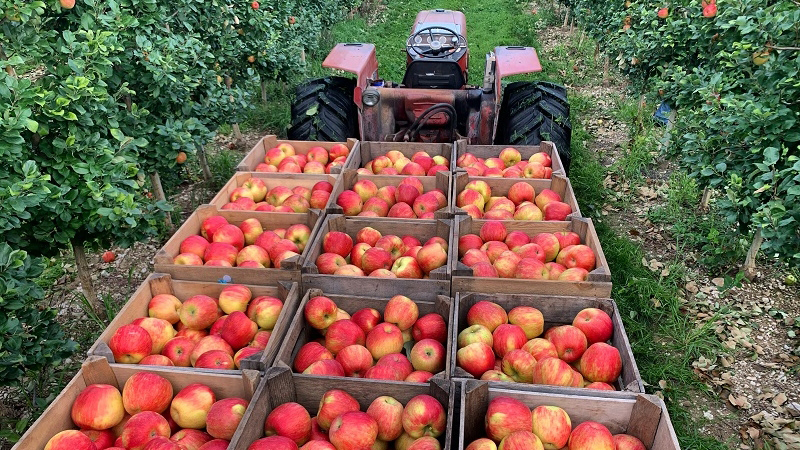Grower Experienced In Biocontrols Says: Be Patient
The use of biocontrols in all aspects of agriculture is becoming more widespread. But incorporating biocontrols in a vegetable farming operation is an evolving process. Gerry Davis – a Pest Control Advisor, an agronomist for the Crystal Organic Division of Grimmway Farms in Bakersfield, CA, and a presenter at the Biocontrols 2015 Conference & Tradeshow – has worked with biocontrols since the late ’90s. He joined Grimmway in 2001 when the operation bought Cal-Organic Farms.
Today, Cal-Organic encompasses about 35,000 acres of certified organic land, producing carrots, potatoes, tomatoes, broccoli, lettuce, onions, spinach, leafy greens – about 30 vegetable crops in total. So for Davis, using biocontrols rather than conventional chemicals is not an option, it’s an imperative.

Organic green onions at Grimmway Farms / Cal-Organic.
Not Dramatic, But Results Come In Time
Davis says it takes a different mindset to effectively use biocontrols, and he encourages growers to be patient as these products don’t work as rapidly as conventional materials. “If after one application a product doesn’t work, you don’t throw up your hands,” he says. “These materials work differently. They are not as dramatic, but overall you can get there with them.”
In the area of disease control, a couple examples of products with which he has had some success include Bacillus subtilis (Serenade, Bayer CropScience) and Bacillus amyloliquefaciens (Double Nickel, Certis USA). “These products present a softer approach to disease control, and you just have to work with them,” he says.
Sometimes you have to find creative ways of avoiding a pest. For example, Davis says that with some fungi, such as the mildews, Grimmway will not plant in certain areas to avoid disease. To combat insects, Bacillus thuringiensis-based materials still are a strong tool to control worms. Keeping other pests in check such as aphids, thrips, leafhoppers, and beetles has been a challenge. You must identify the pest, he says, the same as in conventional production; but treatment thresholds are different with biocontrols.
“You can’t just approach it the same way, with scouting the field, seeing the pest, spraying the pest, and killing the pest,” he says. Instead you must anticipate pests that will be in your fields from year to year and use preventive treatments before they appear, he says.
“Using strictly biocontrols, growers will not eradicate 99% of a population from one application, especially when working with materials that might get only 60% to 70% mortality on insects when you spray, so you can’t afford to use the same thresholds [as in conventional production],” Davis explains. “You can’t play catch-up with something that doesn’t kill everything.”
For example, the effects of some materials, such as neem-based bioinsecticides, are cumulative. With these products you need to take a multiple-application approach. “You have to put the material on and watch and see that as it accumulates [on the plants] it works after several applications,” Davis explains.
Know The Pest/Predator Dynamics
Additionally, Davis says growers must learn pest dynamics and the predator and parasite dynamics associated with that pest. He encourages growers to avoid materials that may hurt predators.
“You must observe what is going on in the field,” he explains. “That’s the big education I got when I made the switch in the ’90s. I got to see what the textbooks talked about as far as how the predators behave versus the pests, when they kicked in, and how they controlled the pest. I had to work with and augment the predator/parasite relationship to try to encourage the predators to take a bigger role in controlling the pest.”
To encourage predators, Grimmway uses trap crops — some to pull the pest away from the main crop, others to encourage predators to come to the trap crop then move to the main crop to feed on insect pests there.
Davis predicts that as more companies develop effective biocontrols, this product line will only continue to grow. “I’m amazed at the pace new products are coming at us to evaluate.” he says, “Hopefully they will just get better as time goes on.”










